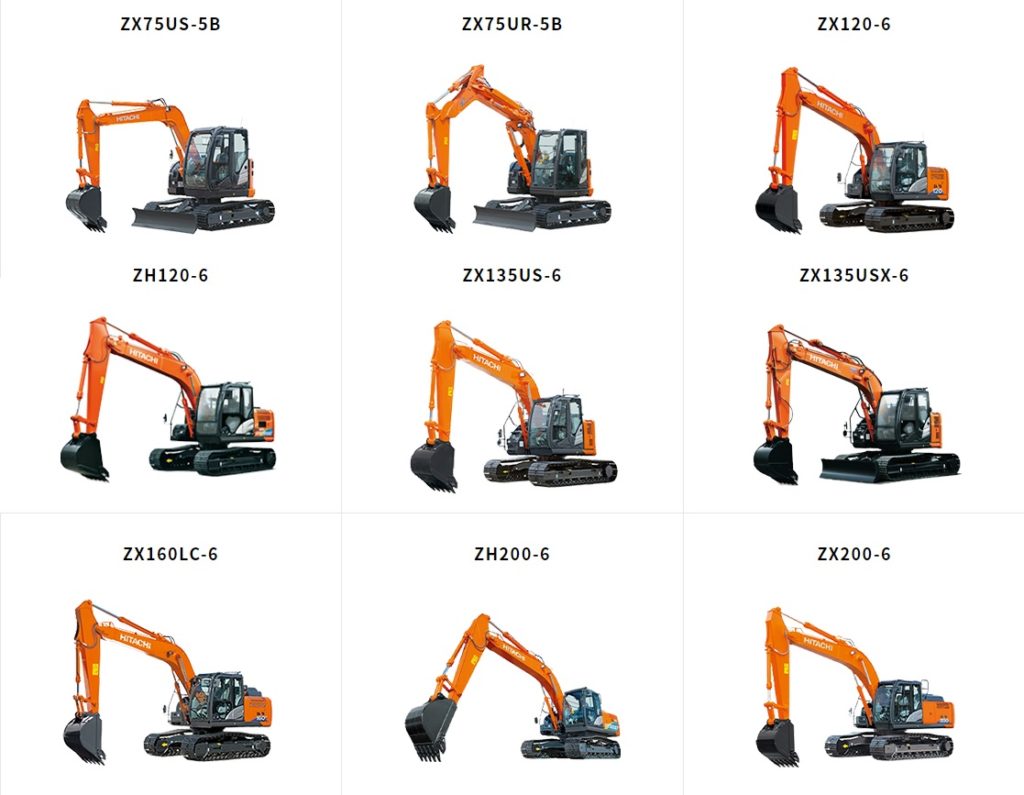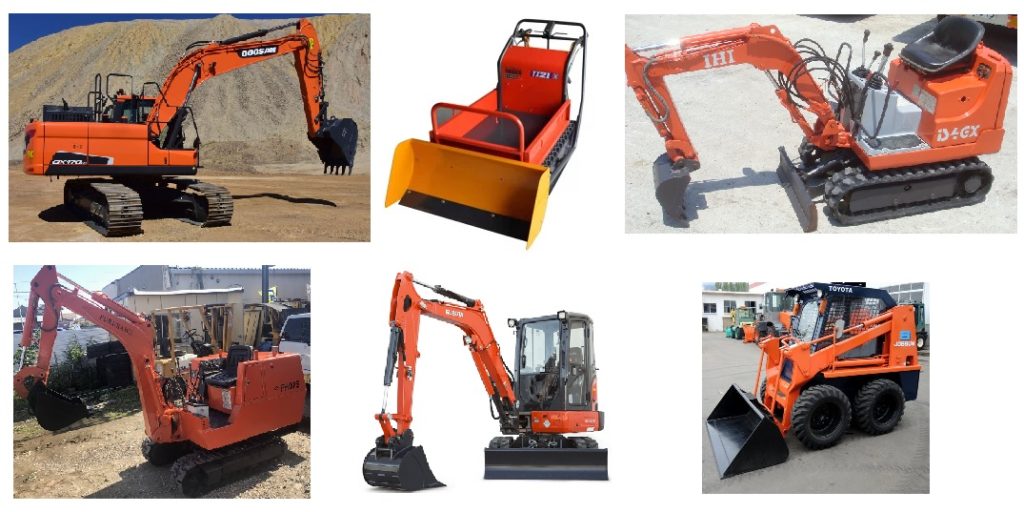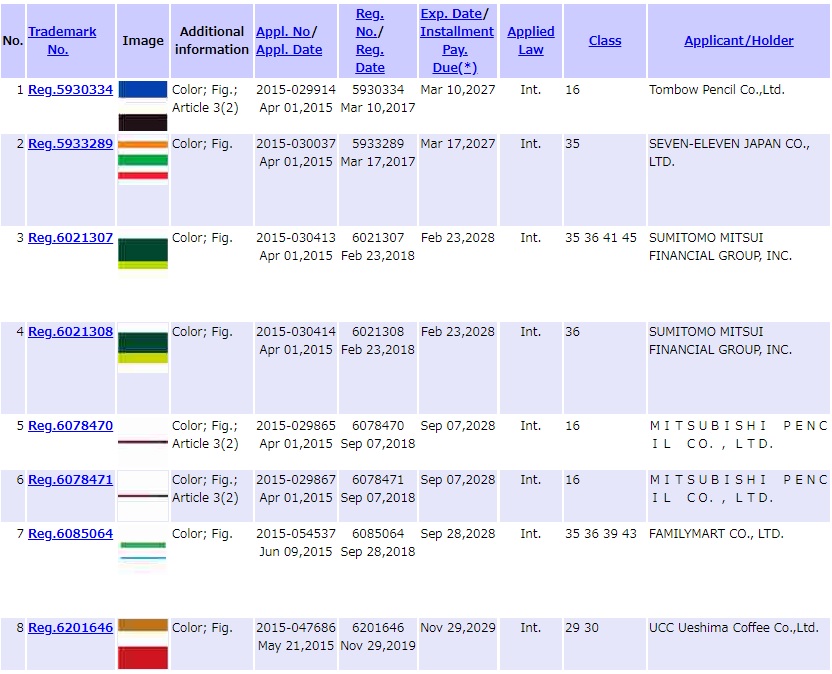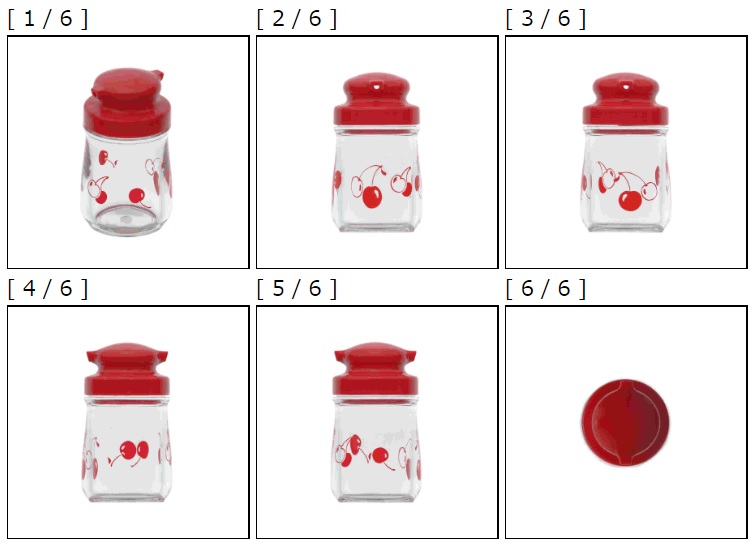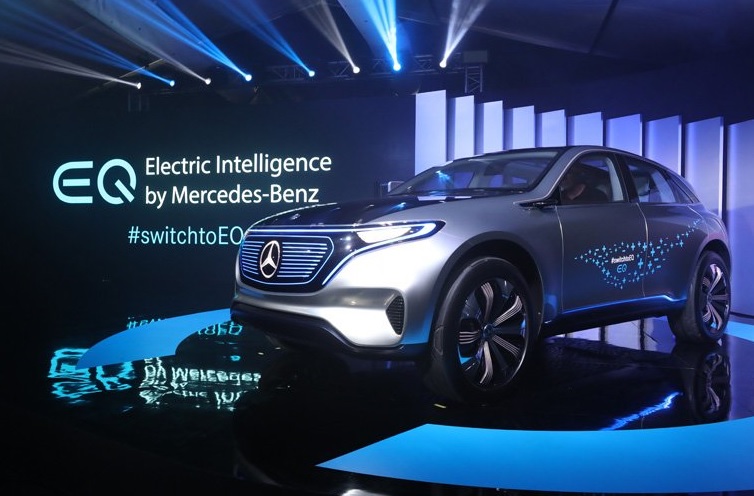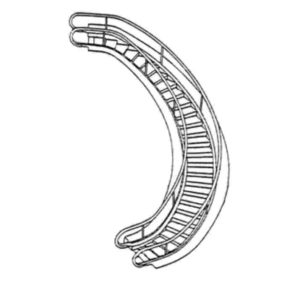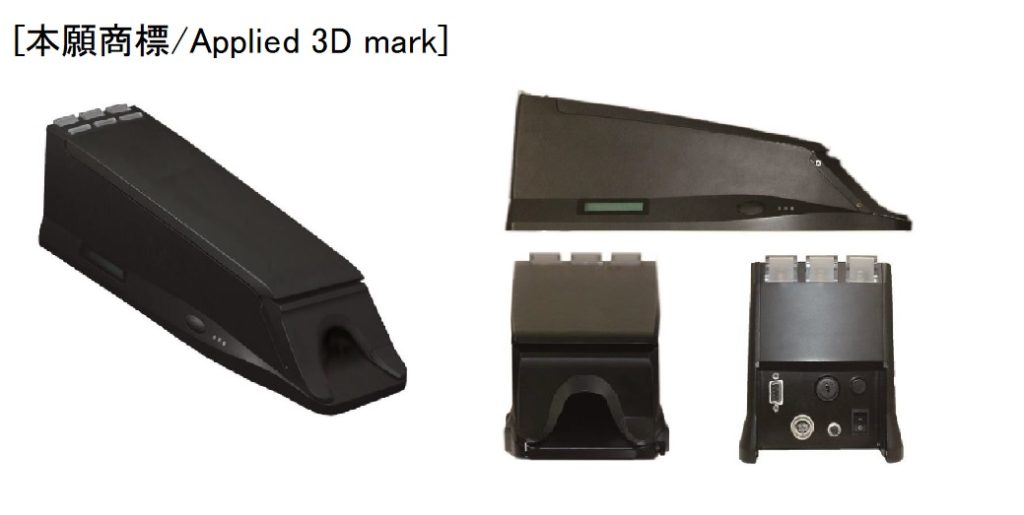On August 27, 2020, the Japan IP High Court ruled to affirm the Japan Patent Office (JPO) decision and rejected TM application no. 2016-34650 for a position mark consisting of fourteen open ellipses built-in grip section of cutting combs in class 21 due to a lack of inherent distinctiveness. [Court case no. Reiwa1(Gyo-ke)10143]
YS Park Cutting Comb
The YS Park Cutting Comb features a non-slip grip section with fourteen air ellipses spaced in 1cm intervals to allow for great flexibility and sectioning.

Allegedly, the comb has been distributed in many countries and its annual sales increased to 170,000~27,000 pieces for the last five years.
Position Mark
Plaintiff, a Japanese corporation to distribute the YS Park Cutting Comb since 1989, sought for registration for fourteen open ellipses built-in grip section of the Cutting Comb as a Position Mark (see below) on March 28, 2016.

In Japan, by an enactment of the New Trademark Law in 2014, new types of mark, namely, color, sound, position, motion, hologram, was allowed for trademark registration since April 2015.
JPO decision
On September 17, 2019, the JPO refused the position mark under Article 3(1)(vi) of the Trademark Law by finding that there are plenty of competitor’s combs with a design, pattern, hole, or pit in short intervals on the grip section and it gives rise to an impression of the decorative or functional linear pattern as a whole. If so, relevant consumers at the sight of cutting comb bearing the position mark would just conceive it as a pattern for decorative or functional indication, not as a source indicator. Besides, consecutive use on the YS Park Cutting Comb over a decade would be insufficient to acquire secondary meaning from the produced evidence and business practice in relation to cutting comb. [Appeal case no. 2018-8775]
Article 3(1)(vi) is a provision to comprehensively prohibit from registering any mark lacking inherent distinctiveness.
Any trademark to be used in connection with goods or services pertaining to the business of an applicant may be registered, unless the trademark:
(vi) is in addition to those listed in each of the preceding items, a trademark by which consumers are not able to recognize the goods or services as those pertaining to a business of a particular person.
To contend, the applicant filed a lawsuit to the IP High Court on October 29, 2019, and demanded cancellation of the decision.
IP High Court Ruling
This is the 2nd court case for the IP High Court to hear the registrability of Position Mark.
At the outset, the court stated the distinctiveness of Position Mark shall be assessed as a whole by taking account of a constituent of the mark and its position on goods or services.
The court upheld fact-findings by the JPO that plenty of competitors advertise and provide cutting combs with a pattern, pit, or open holes in short intervals on the grip section to enhance its function. In this regard, it is unlikely that relevant consumers (general consumers on the case) would consider the whole pattern as a source indicator of the comb. The court pointed that plaintiff has promoted features of fourteen open ellipses on YS Park Cutting Comb with an advertisement of “Air Suspension Function” in fact. If so, consumers would find the open holes as a functional indication.
Plaintiff produced interviews and statements by beauticians, hairstylists, school officials/staff of Cosmetology and Beauty school and argued the secondary meaning of the Position mark, however, the court negated the allegation on the ground that such evidence is insufficient and irrelevant to demonstrate acquired distinctiveness since the goods in question shall be broadly targeted to general consumers. Thus, the court decided the JPO did not error in finding secondary meaning in the case.


